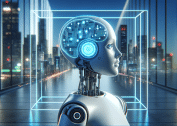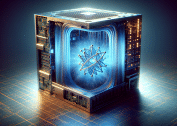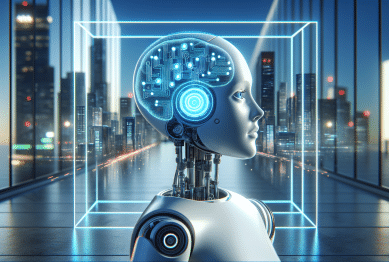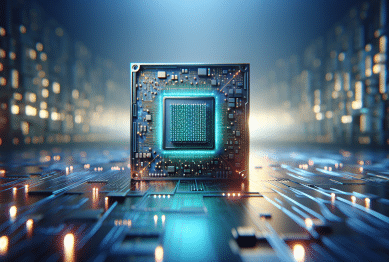Artificial intelligence is changing the world in fascinating ways. Everyday tasks are quietly becoming smarter, safer, and more efficient. Learn what AI does behind the scenes, how it impacts your decisions, and where real breakthroughs are quietly happening across technology and science.
AI in Healthcare: Quietly Transforming Medical Solutions
The impact of artificial intelligence in healthcare is profound, yet often goes unnoticed by most people. From diagnostic imaging to predicting disease outbreaks, AI algorithms are capable of sifting through vast amounts of medical data with unprecedented speed. Hospitals have adopted predictive analytics to anticipate patient needs, ushering in a more proactive style of care. These shifts mean your next check-up or screening may benefit from algorithms that spot subtle warning signs earlier than traditional methods.
Health professionals increasingly rely on AI-powered tools to interpret data from wearable sensors, electronic records, and even social determinants of health. These systems can highlight patterns invisible to the human eye, supporting physicians with deeper insights. Some clinics already use smart assistants to triage cases, answer routine queries, and free up critical time for urgent interventions. The integration of AI algorithms has also sparked exciting research around personalized treatments, adjusting medication regimes or therapy plans based on each patient’s unique characteristics.
Behind every innovation, privacy and ethics remain central to trustworthy AI use in healthcare. Researchers are exploring ways to anonymize patient data and reduce biases in machine learning, ensuring fair and secure outcomes. The gentle automation in scheduling, diagnostics, and patient communication is only the beginning. With new partnerships between technology firms and medical institutions, artificial intelligence is set to support a more responsive, accessible, and data-driven future for health and wellness (see https://www.nibib.nih.gov/science-education/science-topics/artificial-intelligence-healthcare).
Smart Homes and Everyday AI: Convenience at Your Fingertips
Stepping into a smart home, you might notice lights automatically adjust as you move from room to room. What’s less visible is how artificial intelligence optimizes comfort and energy savings by learning your preferences over time. Thermostats, speakers, and appliances increasingly use advanced algorithms that anticipate habits, gently guiding home environments to adapt without fuss. Even vacuuming, laundry, and security tasks are being handled by AI-powered devices that quietly learn from daily routines.
For those managing busy schedules, virtual assistants powered by machine learning are streamlining everyday life. These helpful tools coordinate calendars, filter emails, and suggest reminders based on detected priorities. AI-powered voice commands make it easier to control gadgets, search for information, or manage grocery lists. Advances in natural language processing are improving the ability to converse with devices, making them more intuitive and enjoyable to use, even for those with little technical background.
Another subtle benefit is safety. Security cameras with AI image recognition detect unusual movement and can distinguish between pets, visitors, or actual intruders, reducing noise and increasing peace of mind. As smart devices become more interconnected, the potential for seamless, tailored, and unobtrusive living grows. With careful design and privacy safeguards, AI is quietly reshaping what is possible in every home (see https://www.energy.gov/eere/buildings/articles/5-ways-artificial-intelligence-powers-energy-efficient-building-operation).
You and AI at Work: The Productivity Revolution
AI’s true power appears in workplaces both new and old. Automated systems organize work schedules, predict maintenance, and identify trends in business data before humans can. In offices, smart email filtering, document management, and even meeting transcription free professionals from repetitive tasks. Artificial intelligence models quickly summarize complex information, shedding light on patterns that guide smarter decision-making at every level of business.
Knowledge workers are finding new ways to collaborate with AI tools. Real-time language translation bridges international teams, automated research accelerates innovation, and recommendation engines present relevant reports on demand. In manufacturing and logistics, AI forecasts supply needs and adjusts inventory before shortages occur. Even creative industries benefit: graphic design, video production, and songwriting are being enhanced with suggestion engines that understand context, tone, and trend patterns.
Adaptation is key. Many organizations are offering reskilling programs so employees can work side-by-side with AI rather than fear its arrival. The result is a blending of human creativity with machine precision, raising overall productivity. While AI can handle some tasks better, human insight remains essential for strategy and ethics. Seeing this symbiotic partnership evolve at work is a sign of deeper technology-enabled transformation (see https://www.oecd-ilibrary.org/science-and-technology/the-impact-of-artificial-intelligence-on-the-labour-market_eaf04ec0-en).
Machine Learning and Everyday Online Experiences
Browsing the web is faster, safer, and more relevant, thanks to powerful recommendation algorithms. Search engines use machine learning to personalize results, providing timely information by interpreting subtle clues from your queries. E-commerce platforms showcase products that suit your interests while news feeds adapt stories to reading habits, all orchestrated through behind-the-scenes data analysis.
Security is another domain quietly strengthened by AI. Fraud detection systems, spam filters, and threat analysis bots continually scan for suspicious activity, learning from new attacks to protect accounts and sensitive information. These tools are invisible yet fundamental, creating a safer digital environment and providing greater confidence for online transactions and communication. As cyber threats evolve, smart algorithms continue to adapt and defend systems without user intervention.
Language translation and accessibility tools offer inclusion for more users across the world. AI can transcribe speech, describe images for the visually impaired, or convert text to real-time voice, opening up the internet to more people than ever before. Ongoing machine learning research promises that future online experiences will be even more adaptive, meaningful, and user-friendly, driving the digital world toward greater equity and convenience (see https://www.brookings.edu/articles/a-blueprint-for-using-artificial-intelligence-to-create-a-more-equitable-internet/).
AI in Science: Accelerating Discovery Like Never Before
Artificial intelligence has become a driving force for rapid scientific breakthroughs. In chemistry, machine learning algorithms predict the structure and function of molecules, speeding up drug discovery and development. Astronomers process petabytes of space imagery with AI tools, detecting never-seen-before phenomena in galaxies far away. A range of scientific fields benefit from data-driven models that test hypotheses, optimize experimental setups, and offer insights that would take years to uncover manually.
Environmental science has embraced AI for urgent challenges. Machine learning predicts climate patterns, tracks endangered species, and analyzes satellite imagery for disaster response and conservation. These automated systems support human experts with deeper, data-rich decision support, enhancing the ability to act quickly in critical situations. The synergy between domain expertise and algorithmic processing is proving essential for managing the complexities of global crises.
Research funding organizations and universities increasingly invest in AI-driven interdisciplinary hubs. Partnerships between computer scientists and biologists, for example, are unlocking new research on genetics and disease. The expanding toolkit of AI-enabled models, simulations, and visualizations is making scientific knowledge more accessible and accelerating cycles of innovation (see https://www.nature.com/articles/d41586-023-02593-7).
Challenges and Ethics: Navigating the AI Frontier
AI’s rapid spread brings real questions about data use, privacy, and fair access. Biases in algorithms can reinforce social inequalities if not carefully mitigated. It’s critical that technical advances are paired with robust policies and independent oversight, ensuring that AI remains a tool that supports rather than replaces human judgment. Transparency in how machine learning systems work is essential for building trust and guiding responsible adoption.
Public discourse is helping shape how artificial intelligence evolves in society. From government agencies to advocacy groups, experts encourage the development of best practices, standards, and accessible education about AI’s workings and limitations. There are also ongoing efforts to ensure that new innovations don’t leave communities behind—especially as technology changes how jobs, education, and healthcare are delivered.
Ultimately, the future of artificial intelligence will depend on shared values and collaboration between technology providers, researchers, and the wider public. Practical steps—such as open-source initiatives, ethical codes of conduct, and robust regulatory frameworks—can help everyone benefit from advancements while minimizing risks. It’s a dynamic field, and thoughtful guidance will be key to sustaining progress responsibly (see https://www.nist.gov/artificial-intelligence).
References
1. National Institute of Biomedical Imaging and Bioengineering. (n.d.). Artificial Intelligence in Healthcare. Retrieved from https://www.nibib.nih.gov/science-education/science-topics/artificial-intelligence-healthcare
2. U.S. Department of Energy. (n.d.). 5 Ways Artificial Intelligence Powers Energy Efficient Building Operation. Retrieved from https://www.energy.gov/eere/buildings/articles/5-ways-artificial-intelligence-powers-energy-efficient-building-operation
3. Organisation for Economic Co-operation and Development. (2023). The Impact of Artificial Intelligence on the Labour Market. Retrieved from https://www.oecd-ilibrary.org/science-and-technology/the-impact-of-artificial-intelligence-on-the-labour-market_eaf04ec0-en
4. Brookings Institution. (2022). A Blueprint for Using Artificial Intelligence to Create a More Equitable Internet. Retrieved from https://www.brookings.edu/articles/a-blueprint-for-using-artificial-intelligence-to-create-a-more-equitable-internet/
5. Nature. (2023). Artificial Intelligence in Science: Progress, Pitfalls and Promise. Retrieved from https://www.nature.com/articles/d41586-023-02593-7
6. National Institute of Standards and Technology. (n.d.). Artificial Intelligence. Retrieved from https://www.nist.gov/artificial-intelligence









